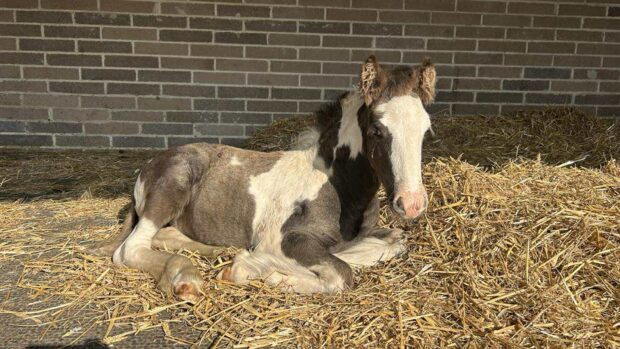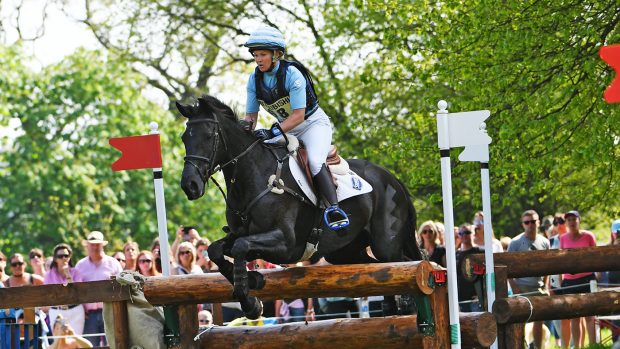Weaning foals is a nerve-racking time for owners as well as being potentially one of the most stressful experiences in a horse’s lifetime. But whether you are a one-mare owner or run a large stud, vet and foal specialist Sarah Stoneham MRCVS says that it’s important to aim for problem prevention rather than cure.
“In the wild, weaning is very gradual,” she explains. “As the mare has a new foal, the previous one goes off with other youngstock to form bands within the herd.
“With the domesticated horse, the mare is either put in-foal again or goes into work. This means we have to take a different approach, but still minimise stress and problems: we need to do everything possible to reduce the risk of problems rather than have to treat them.”
Preparing for weaning
“The long-term picture when aiming to produce a performance horse is that you need to minimise the risk of developmental problems, which means maintaining an even growth rate,” says Sarah, a partner at Rossdale & Partners, Newmarket, who runs the practice’s foal unit.
She says that before a foal is weaned, its digestive system must have reached a sufficient degree of maturity and adaptability to its diet. Although foals can be seen eating grass and perhaps their dams’ hard feed very early, the gut changes dramatically over the first few months.
“At first, it’s designed to digest milk, with a lot of digestion taking place in the small intestine, then it changes to become a hind gut fermenter,” she says. “It’s important not to overdo hard feed because of the risk of digestive and joint problems.
“Most feed manufacturers offer high-protein diets with high vitamin and mineral supplements to help foals grow, but although there is a balance between what is ideal and what is practical in situations where you have several pairs together; a fat foal will need a different approach from one who needs to gain weight.
“It’s a good idea to monitor height and weight before and after weaning to check that foals are growing evenly. A lot of feed companies have charts to make this easier, though it has to be related to birth weight, breed and environment.”
It is also important that the fibre intake is kept up, as lack of fibre has been associated with the start of stereotypic behaviour, notably weaving, crib biting and wind sucking. Although some researchers now believe that horses who start such behaviour have a predisposition to it, the stress of weaning can be a trigger.
When to wean your foal
Some studies relating to thoroughbred foals recommend going by weight rather than age, but Sarah’s advice is that for most owners, age is an easier guideline.
“The bodyweight method has to be weight-and rearing conditions-specific,” she explained. “Most people will wean from six months onwards. If there are specific health problems, it can be done from four months onwards, but it’s difficult to wean at under five months without getting a check in the growth rate.”
Over a minimum period of a month before weaning, the foal must be adapted to eating appropriate and sufficient quantities of foal creep ration. There are various ways of feeding, but Sarah recommends creep feeding in the field as the best option.
“If you feed them in the stable so the foal eats from the mare’s manger, you have no control,” she says. “The creep feed system, where a sectional pen keeps the mares on the outside but allows foals to go in through archways to their feed, is much better; the best designs have adjustable archway heights.”
Separating mare and foal
When it’s time for foals to go it alone, approaches vary. While it is obviously easier for breeders with more than one foal, Sarah stresses that owners with just one broodmare should make sure the foal has appropriate company.
“Horses are herd animals and it’s inappropriate to keep a weaned foal on its own,” she said. “They need company and it’s also important for their normal development. Either team up with someone who has another mare and foal, or find a suitable companion.
“Stud farms often have a retired pony who acts as a nanny when needed, or even a quiet gelding. Old pony mares who have had a foal or two are often the best companions for single foals because they teach them what is acceptable behaviour and what isn’t.
“It’s much easier when you have a group of mares and foals of similar age who have been reared in a similar way. The best way here is to take one mare out of the field at a time, letting the group settle down again until you take the next away and leaving the calmest, most sensible mare in until last.”
The stress of weaning
Foals are individuals and react in different ways when their mothers disappear.
“Some don’t even notice and others will run up and down for a couple of days,” says Sarah. “Make sure the fencing is safe — and it helps to get the mare’s milk dried up if they are out of earshot.”
Minimising stress is important for humane considerations, but also for long-term health.
“Anything that stresses a foal stresses its immune system,” says Sarah. “The development of the immune system is related to exposure to different diseases and it isn’t completely developed until over a year old. Stress-related problems include gastric ulcers and recurrent respiratory disease.”
Some breeders like to have colts gelded while they are still on the mare, reasoning that it is less stressful at that stage.
“Foals do seem to take the stress quite well when they are on the mare, so if the testicles have descended it might be worth considering,” says Sarah. “But if it isn’t possible, it should be done well after weaning when the foal has had a chance to become established.”
Making the break is a big step. But planning ahead gives odds in favour of mare and foal going their separate ways without stress or setbacks — for any of you.
This veterinary feature was first published in Horse & Hound magazine



